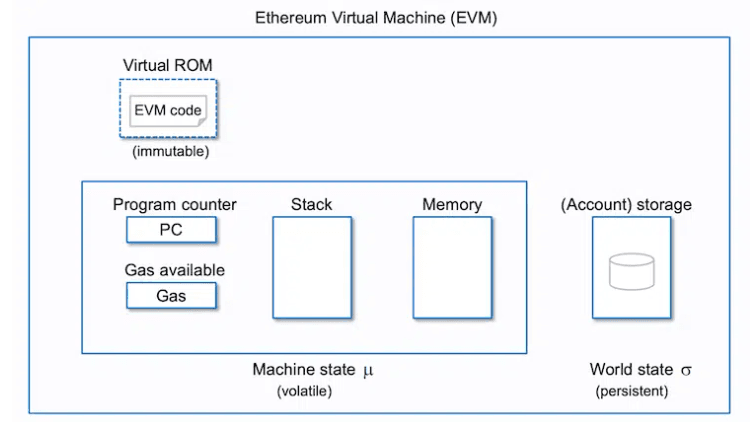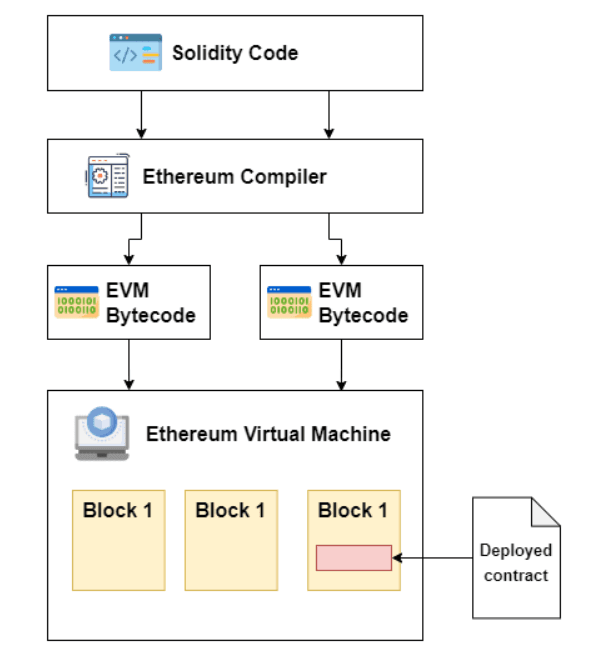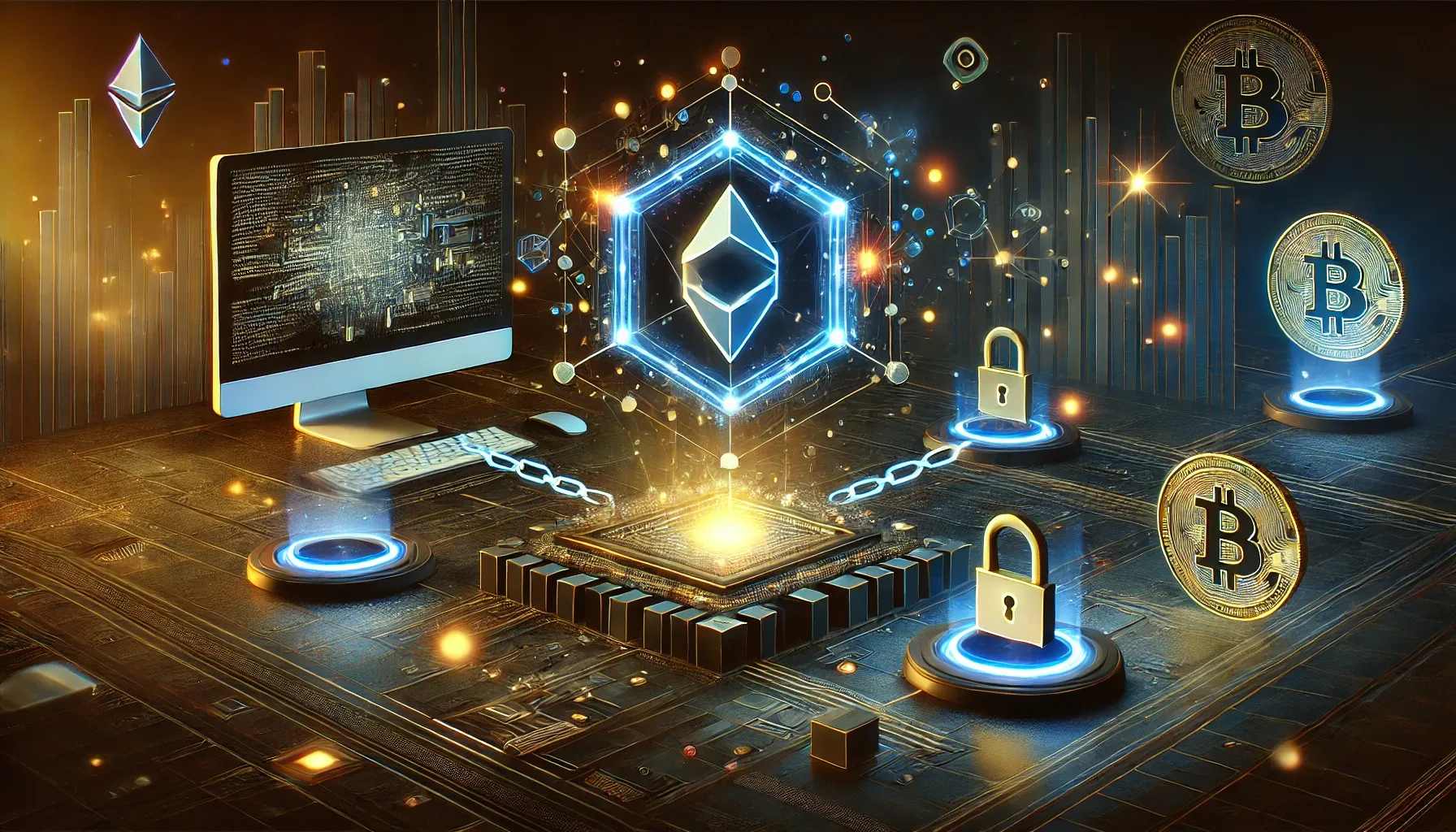Did you know that behind every transaction and every smart contract on Ethereum hides a calculation engine that guarantees security and consistency throughout the network? That engine is the Ethereum Virtual Machine (EVM), the technological heart that makes it possible to execute decentralized applications reliably and without intermediaries.
The EVM: The Essential Engine that Drives Ethereum
The EVM is much more than just a “black box” that executes code. It is the virtual environment responsible for interpreting and processing the instructions of smart contracts. This allows every Ethereum network node to arrive at the same result when processing a transaction, regardless of the hardware or operating system on which it runs.
Can you imagine a decentralized global computer? That’s what the EVM is: a collaborative system that acts as the “brain” of Ethereum, ensuring that every action and operation on the blockchain is carried out accurately and securely.
The Core of Ethereum: What is the EVM?
The EVM is the virtual environment in which all Ethereum smart contracts are processed and executed. Imagine that every time you perform an operation on your computer, a program runs that transforms your orders into precise actions; the EVM performs that function, but on a global network composed of thousands of nodes.
- Uniform Execution: All nodes on the network process the same information in an identical manner, ensuring that, for the same set of instructions, the result is always the same.
- Absolute Isolation: The EVM operates in an environment completely separated from the rest of the network. This prevents an error or malicious code from affecting other processes outside the virtual machine.
- Computational Flexibility: Thanks to its Turing-complete design, it can theoretically execute any algorithm, allowing the development of applications as simple or as complex as needed.

Who Created the EVM and What Makes It Unique?
The creation of the EVM dates back to the early days of Ethereum.
- Vitalik Buterin conceptualized the idea in 2013, marking a before and after in the world of blockchain.
- However, it was Gavin Wood who, through the famous Yellow Paper, formally defined the technical foundations of the EVM.
- Greg Colvin also played a crucial role, consolidating the practical implementation of this technology.
This combination of talents allowed the development of a tool that not only executes smart contracts, but also transforms Ethereum into a complete and decentralized ecosystem. Its innovative design guarantees that, despite the inherent complexities of distributed systems, every operation is executed securely and uniformly across the network.
Key Features of the EVM
To understand its relevance, it is important to highlight some of the main features that make the EVM an indispensable component:
- Total Determinism: The EVM ensures that, for the same initial state and the same transaction, all nodes will produce exactly the same result. This is vital for reaching consensus in the network.
- Turing Complete (Quasi-Turing Complete): Although in theory it could execute any algorithm, the need to pay for each operation (through gas) imposes limits that prevent infinite loops.
- Secure Isolation: The EVM runs in a protected environment, with no access to the file system, the network, or external data. This means that malicious code cannot affect other processes outside the virtual machine.
- Flexibility for Developers: Thanks to languages like Solidity, creators can write complex smart contracts that compile into bytecode and run uniformly on all nodes.
- Resource Management through Gas: Every operation in the EVM has a gas cost, which prevents abuse and ensures that network resources are used efficiently.
Interesting Fact: The original creators of the EVM, Gavin Wood and Greg Colvin, designed this environment so that Ethereum could become a “global computer” that autonomously runs decentralized applications.
How Does the Ethereum Virtual Machine Work?
The magic of the EVM lies in its ability to transform code written in high-level languages into instructions that execute uniformly across the network. Let’s look at the process step by step:
1. Writing and Compiling the Code
Smart contracts are developed using languages like Solidity or Vyper. This code, written in a developer-friendly manner, is compiled into an intermediate language: bytecode.
Practical Example: When a developer creates a contract to manage a decentralized finance (DeFi) dApp, they first write the code in Solidity, compile it to bytecode, and then deploy it on the Ethereum blockchain.
2. Execution on the EVM
Each node on the network runs the EVM to process the bytecode of the smart contracts. The EVM works as a stack machine, with 256-bit registers and temporary memory that resets with each transaction.
Fun Fact: This architecture ensures that, at the end of execution, all nodes update the global state identically, maintaining consistency across the network.
3. Using Gas to Measure Resources
To prevent a contract from consuming resources indefinitely (for example, through infinite loops), every operation in the EVM has a gas cost. The sender of a transaction must specify a gas limit and a price per unit.
Important: If a transaction runs out of gas, execution stops and, although the state change is reverted, the gas consumed is not refunded. This acts as a protection mechanism against attacks.
4. Isolation and Security
The EVM operates in an isolated environment, meaning that the code executed does not have access to operating system resources or external information. This isolation protects both the network and the nodes from potential malicious code.
Trusted Reference: To delve deeper into the inner workings of the EVM, you can consult the Ethereum Yellow Paper, which offers a formal and technical description of the system.
The Process Behind the EVM: From Solidity to Bytecode
The magic of the EVM begins the moment a developer writes a smart contract. This process can be divided into several key steps:
1. Creation of the Smart Contract
Contracts are written in high-level languages, such as Solidity or Vyper, which are easy for developers to understand.
- Practical Example: A contract that manages loans in a DeFi dApp is developed in Solidity, which facilitates its readability and maintenance.
2. Compilation to Bytecode
The written code is translated into an intermediate language called bytecode. This is the language understood by the EVM, composed of a series of specific operation codes (OP_CODES).
- Interesting Fact: This compilation process ensures that the same contract is executed identically on all nodes.
3. Execution on the EVM
Each node on the Ethereum network executes the bytecode through the EVM. The machine uses a stack-based architecture with 256-bit registers and temporary memory that resets with each transaction.
- Fun Fact: The use of a stack and an isolated environment guarantees that, after executing a transaction, the network’s global state is updated consistently on all nodes.
4. Gas Management
To prevent any operation from consuming unlimited resources (such as infinite loops), the EVM uses the concept of gas.
Control Mechanism: Every operation has a gas cost. The user who initiates the transaction must pay this fee, which prevents abuse and ensures the responsible use of the network.
- Example: If a smart contract runs out of gas during execution, the operation is reverted (without refunding the gas cost already consumed), protecting the network from potential attacks.

Advantages and Limitations of the EVM
Advantages
- Security and Trust: The isolated nature of the EVM and its gas mechanism protect the network from attacks and abuses.
- Uniform Execution: By ensuring that all nodes process transactions in the same way, a robust and reliable consensus is maintained.
- Flexibility to Innovate: It allows developers to create everything from simple value transfer applications to complex decentralized finance systems, NFTs, DAOs, and more.
- True Decentralization: There is no single point of failure, as the EVM runs on thousands of nodes distributed globally.
Limitations
- Transaction Costs: During periods of high demand, gas prices can increase considerably, making contract execution more expensive.
- Scalability: Although the EVM is very powerful, its processing capacity is limited compared to centralized systems (for example, Visa processes thousands of transactions per second).
- Complexity for Novice Developers: Although the Solidity language is relatively simple, creating secure and efficient smart contracts requires specific technical knowledge.
- Performance: The architecture of the EVM, originally designed for the utility of the moment, may be less efficient than other modern virtual machines, which has spurred the development of Layer 2 solutions and the transition to environments like eWASM.
- Security Tip: It is crucial that developers conduct thorough testing and security audits on their smart contracts, as any error can have costly consequences in a public and decentralized environment.
The Future of the EVM in the Ethereum Ecosystem
The EVM environment continues to evolve to address its limitations and adapt to new market demands. Among the most notable initiatives are:
Transition to eWASM
Ethereum is exploring the shift from the traditional EVM to Ethereum WebAssembly (eWASM), a modular and more efficient environment expected to improve speed and reduce transaction costs.
Although it is still debated whether eWASM will completely replace the EVM, this transition represents a bet on the scalability and performance of the ecosystem.
Layer 2 Solutions
To mitigate issues of congestion and high gas prices, Layer 2 solutions such as Optimistic Rollups and ZK-Rollups are being implemented. These technologies allow multiple transactions to be grouped and processed more efficiently, leveraging the security of the main Ethereum network.
Recommendation: Research platforms like Polygon and Arbitrum, which have gained ground thanks to their compatibility with the EVM and their performance improvements.
Greater Interoperability
The growing interest in interoperability among different blockchains is leading many networks to adopt EVM compatibility. This allows applications and smart contracts to run in multiple environments, expanding Ethereum's reach and utility.
Real Example: Networks such as Binance Smart Chain and Avalanche have integrated EVM compatibility, making it easier for developers to migrate or replicate their dApps in new ecosystems.
Innovation in Development
The developer community continues to contribute improvements and tools to facilitate the creation of smart contracts. With a broad library of standard codes and updated documentation resources (such as those available on ethereum.org), it is increasingly accessible to learn and develop in this environment.
Tip for Developers: Participate in forums and communities like Ethereum Stack Exchange to exchange knowledge and stay up to date with the latest trends and best practices.
Experts like Zack Guzman and opinion leaders in the crypto world have emphasized that innovation in the EVM and its transition to more efficient environments will be key for the next phase of Ethereum's growth.
Compatibility: Which Blockchains Are Compatible with the EVM?
The popularity and effectiveness of the EVM have led other blockchains to adopt this technology to take advantage of its infrastructure and tools. Some prominent examples are:
- BNB Smart Chain (BSC): Created by Binance, it is characterized by low fees and high transaction capacity, making it ideal for DeFi applications.
- Polygon (MATIC): Functions as a Layer 2 scaling solution for Ethereum, combining various technologies to reduce costs and speed up transactions.
- Avalanche (AVAX): A high-performance platform that uses its own consensus mechanism, allowing for fast transactions with high capacity.
- Arbitrum: Based on optimistic rollups, this solution aims to reduce costs and improve efficiency in the execution of smart contracts.
- Optimism: Another optimistic rollup alternative that focuses on increasing Ethereum’s processing capacity without compromising security.
- Other Compatible Blockchains: Additionally, there are other networks that have integrated into the EVM ecosystem, facilitating interoperability and the expansion of dApps into new environments.
